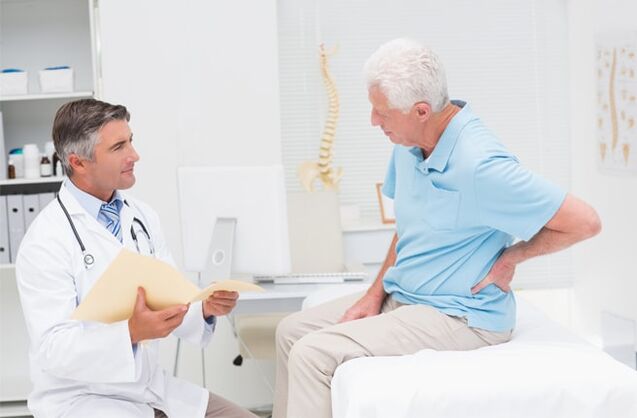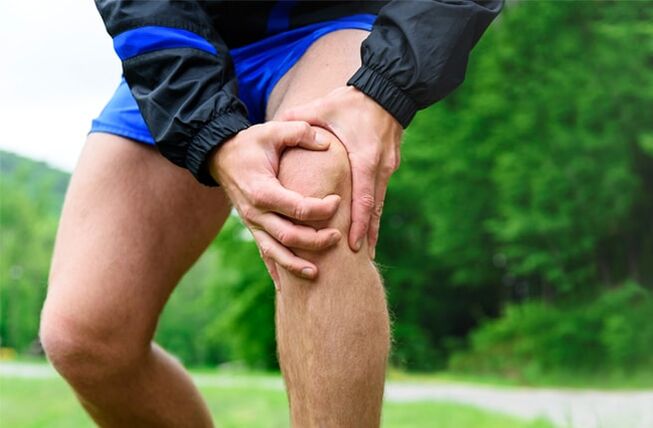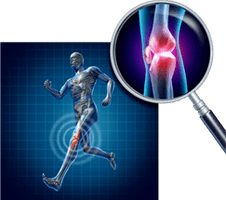Arthrosis (osteoarthosis or deforming osteoarthrosis (DOA) or deforming arthrosis)- The disease in which the articular cartilage is affected in the initial stages and then incorporates the muscles, ligaments, nerves and bone tissue into the pathological process.
Arthrosis is a disease that develops for various reasons.These include metabolic disorders, injuries, intoxication, etc.
Patients are generally called "arthrosis" as a joint disease in which pain, mobility restrictions, and other discomfort can be observed in one or more joints, which is not always true.Osteoarthritis and associated pain occur as a result of the "aging" of the joints, but due to the consequences of various negative factors, the causes of joint pain may be both infection and injuries, and in these cases other pathologies are concerned.
Statistics

70% of patients, the therapist, the neurologist, the surgeon, the rheumatologist, complain of joint pain.Most often these are the pain in the lower back and the large joints (knees, hips).70% of the long -term disability in the world and especially Russia fall to osteoarthritis.There are many patients - 10% of those with the doctor, as a result of advanced arthrosis, need disability and constant help.Arthrosis is one of the leading reasons why a person's early departure from a full social life, in statistics, is only a coronary heart disease.
The likelihood of arthrosis is increased with age: in people over 50 years of age, 27% of the cases over the age of 70 are 97%, due to the joint -related burden on joints and the expiration of normal operation.
Reasons and development
The main factor in the development of arthrosis is a violation of the nutrition of arthritis, which leads to destruction.This is not as important as this results in this (great overweight, professional sport, work characteristics, hormonal disorders, congenital joint errors, etc.), the result is the same: the result:
- In the common cartilage, changes begin, leading to the loss of elasticity;Microcks appear in the thickness of the cartilage;
- The blood supply to the joint is confused, the production of the joint fluid is reduced, and the joint mechanics changes;
- Then all joint structures, adjacent muscles and nerve endings are involved.
The listed degenerative disorders lead to the formation of joint symptoms and the disease "begins" at the moment when the constant mechanical load becomes transcendental to the joints (or joints) and triggers the process of destruction.
Symptoms

Unlike other joint pathologies, arthrosis has developed for years, for a long time and imperceptibly for people.The moment the body indicates severe pain in the joint, the abnormal process in it is already starting.
Pain is the main symptom of arthrosis (osteoarthrosis), in the initial stages of pain, which are not very expressed, weak, comparable to discomfort.In the joints, discomfort occurs independently of the load without medical or medical intervention, but they quickly become tangible and restrict the usual human mobility.
Pain at rest or at the beginning of movement (so -called "start"), for example, in the morning or during the day after a long session, in a situation, in a situation, in motion, pass by.Arthrosis is also characterized by night rest, which also decreases rapidly with the onset of motor activity.Patients facing arthritis generally say that "bones knead" to eliminate discomfort, "wake up joints", which are usually precisely characterized by this condition.
The pain is not only due to the joint disorders itself.When all the components of the joint, the muscles and nerve endings are involved in the process, the pain becomes varied and painful: "shooting" along the nerve along the muscle.Blood supply to joints, nerves and muscles is disturbed, and degenerative changes occur rapidly.
Temporary or constant restrictions of joint mobility (contracture) are due to severe pathological changes in joint and muscle tissue.For example, arthrosis of the hip joints, shortening of the limb, the pelvis "oblique" and the curvature of the spinal column.
In the initial stages, the crunchy in the joints is almost invisible, but becomes constant when the disease is developed.This symptom is psychologically more pain in patients with arthrosis, as it indicates severe disorders, body aging and especially the muscle bone system.
In later stages of arthrosis, the joint is deformed, which is associated with curvature of all joints, bones, decreasing the amount of joint fluid and subluxation of the joint.
Stage
Depending on the severity of the symptoms, many stages of osteoarthrosis can be distinguished.

There is no pain in the first stage, and during the moderate load they only appear after high load (fitness, weight transfer, running) or long static position.One does not experience restrictions and difficulties in motion.Drug treatment is not required.
In the second phase of pain, pronounced and constant, rapidly arising out of provocative factors (longer walks, physical activity), does not pass on their own.The patient is in limited motion, mobility of certain joints - knees, hips and others are sharply limited.Medical assistance is required, treating treatment, including medicines and non -drog methods.
In the third stage, the patient moves with difficulty, needs constant care and painful pain.As a general rule, surgical treatment (endoprostics) and enormous physiotherapy are required to restore quality of life.
Symptoms of osteoarthritis are already in the young age and should not be ignored in this case, but seek medical attention.Timely prescribed treatment supports the normal function of the joints and helps to avoid rapid development of the disease.




























